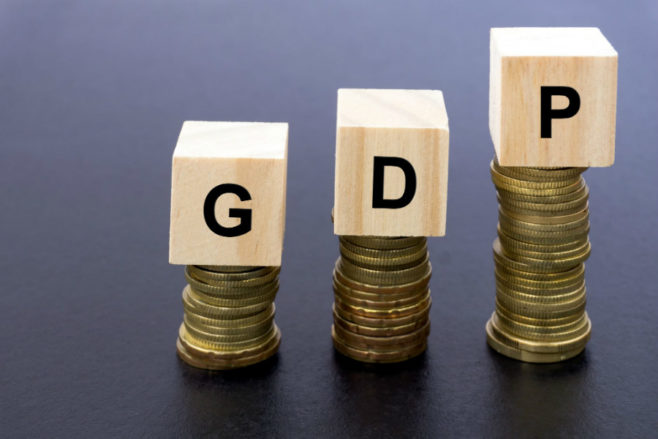The economy is seen to grow between 6.8 and 7.2 percent this year driven by strong macroeconomic fundamentals, based on a research of an investment banks.
The outlook of First Metro Investments Corp. (FMIC) is significantly higher than the World Bank’s forecast of a 6.5 percent GDP growth for the country and is close to the Asian Development Bank’s 6.7 percent projection.
As of the third quarter of 2018, the economy expanded by 6.3 percent.
The Development Budget Coordination Committee targets GDP growth of 6.5 to 6.8 percent in 2018.
“Economic expansion will be driven by the upturn in consumption spending as a result of an improving inflation outlook,” FMIC said, noting that the contribution from a sustained fiscal stimulus out of the government’s infrastructure spending, a recovery in the manufacturing sector, rising tourist arrivals, and the expected hefty election spending.”
“The Philippine economy is again in a growth trajectory. Apart from the country’s strong macroeconomic fundamentals and expected inflation easing this year, another important factor in pushing economic growth is the continued policy reform drive of the Duterte administration, which includes tax reform, corruption and red tape reduction, broadening the base of the financial system and facilitation of new and disruptive technologies,” said Rabboni Francis Arjonillo, FMIC president.
Cash remittance from overseas Filipino workers (OFW) will sustain its 2 to 4 percent growth rate this year, FMIC said.
Victor Abola, economist at the University of Asia and the Pacific, said consumption is seen to grow 6 percent this year amid the various spending stimulus.
The industry sector is projected to grow 8.3 percent while the services sector is seen to grow 7 percent, Abola noted.
FMIC expects inflation average between 3 and 3.5 percent as food supply stabilizes and global oil prices ease.
The Philippine peso is seen to average at 54 to the dollar, on pressures from a widening trade deficit as import of capital goods continue to increase in support of the government’s infrastructure push.
FMIC said imports will sustain their double-digit growth of 10 to 14 percent on the back of the government’s infrastructure push while exports will recover, growing by 4 to 8 percent.
Christopher Ma. Carmelo Salazar, FMIC group head for financial markets, said bond rates are seen to drop by 50 basis point from their 2018 yearend levels on an environment of declining inflation.
The projected slower policy rate hikes in the US, coupled by a possible policy rate cut by the Bangko Sentral ng Pilipinas (BSP) in the second half of the year will further ease the pressure for a hike in bond rates, FMIC said.
Arjonillo said there is also a compelling argument for the BSP to cut reserve requirement by two percentage points, releasing to the economy about P180 billion in additional liquidity.
This will also reduce banks’ intermediation cost by 15 basis points that could further drive economic activity, he said.
Jose Pacific Marcelo, FMIC group head for investment banking, meanwhile, said fund raising in capital markets this year will reach P824 billion, up 51 percent from last year’s P546 billion.
Fixed income issuances are seen hitting P618 billion due to the anticipated quadrupling of bank bonds, up from last year’s P319 billion.
The equities-based issuances meanwhile are seen to hit P206 billion, 9 percent lower than last year’s P227 billion.
Initial public offering (IPO) meanwhile is seen to pick up from issuances deferred last year due to market conditions, hitting P62 billion compared to just P8 billion last year.
Christina Ulang, FMIC head of research, meanwhile said corporate earnings may post a 10-percent growth this year, pushing the Philippine Stock Exchange index (PSEi) to between 8,400 and 8,800 as investors give the market a price-to-earnings ratio of between 18 to 19x.
(R. Castro, Malaya)








